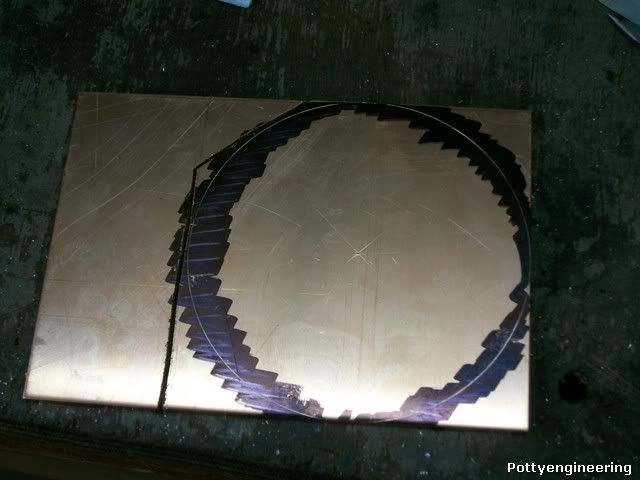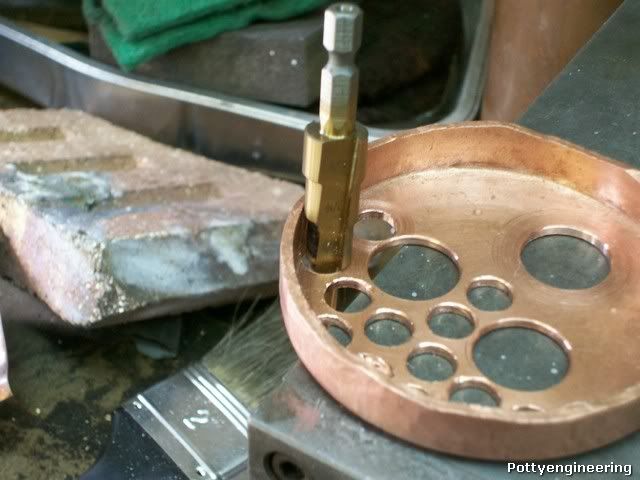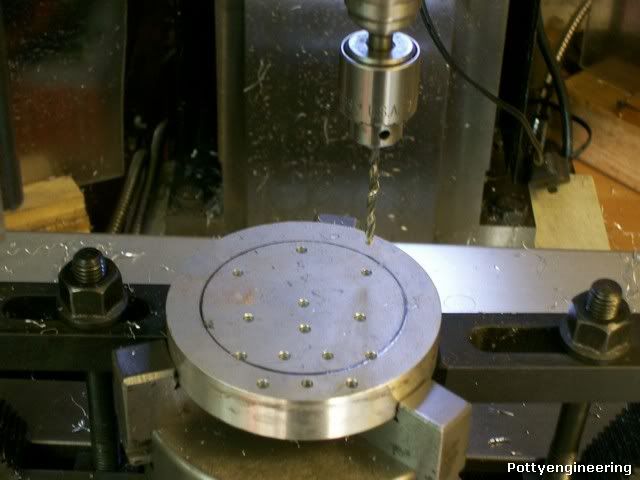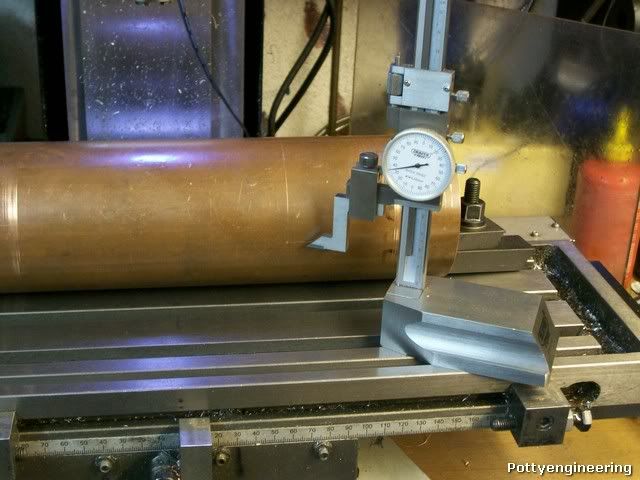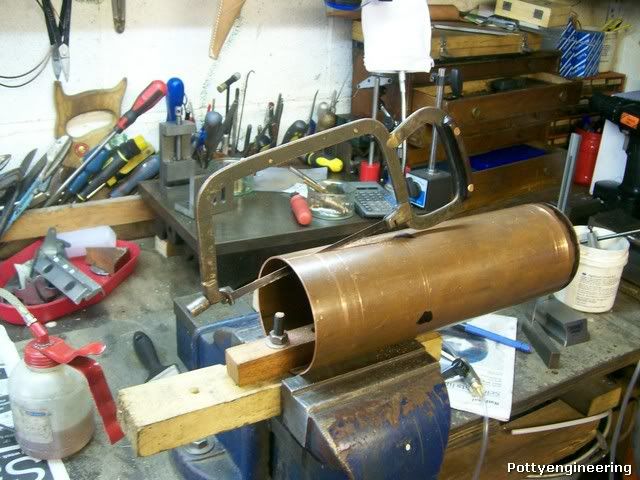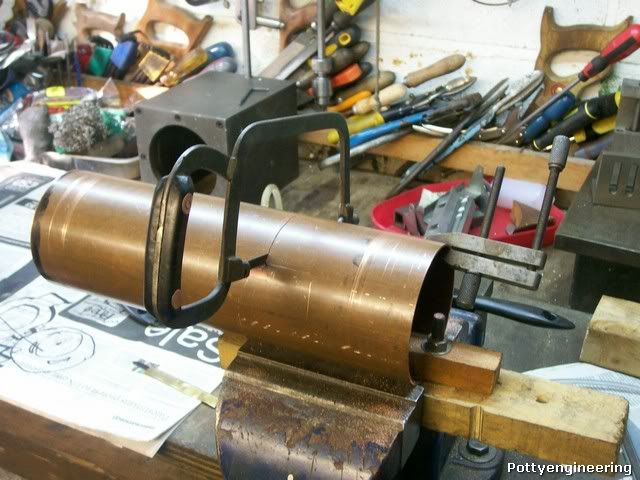Thanks for the input Chaps we'll get this job cracked between us.
Picked up a nice bit of 2.5mm thick copper the drawing spec is for 13g 2.33mm so its on the safe side, while I was their they cut me a 2" lump of 15/8 phos bronze for the steam dome bush, and I also picked up a length of 1/8 phos bronze to make some closing screws, and a rod of Easy Flo No1 silver solder this has a slightly higher melting point than Easy Flo No2 that I'm going to use on the bulk of the boiler, but there are a couple of places that I want to use this higher melting point solder, as the joint will be subjected to high temperatures when I'm soldering additional joints close by.
Work on the new fire box tube plate first job mark out a circle 3 7/8 dia (3 3/8 + 2 * 1/4) the 1/4 is so that the flange can be formed.
Then mark a 3 3/8 dia circle so the former can be centred, then anneal the plate, clamp the disc in the vice with the former and start to fold the flanges over with hammer blows, the copper starts to work harden quite quickly you can feel the material stiffen under the hammer don't try and force it or the copper will split, anneal the plate again.
This is it after the second anneal.
In total I annealed it 7 times before the flange had formed over onto the former.
This is it complete after an hour in the pickle bath.
Well that me back where I started before I try drilling the plate again I'm going to have a bit of an experiment and make some kit that should make the job easyer.
This is going to be a bit of topic:- I want to grind a drill up specifically for sheet metal whilst searching my drill stash for a spare 3/8 and 3/4 drills I came across this sorry site:-
I must have picked it up out of the scrap where I use to work.
So I decided to give it some TLC, my Dad taught me how to grind drills up by hand when I was an apprentice many years ago, and like riding a bike its just something I can do, if you asked me to explain it I couldn't, I could show you but explain it no.
Any way this is the result.
And the proof of the pudding.
Still got the touch

Stew





